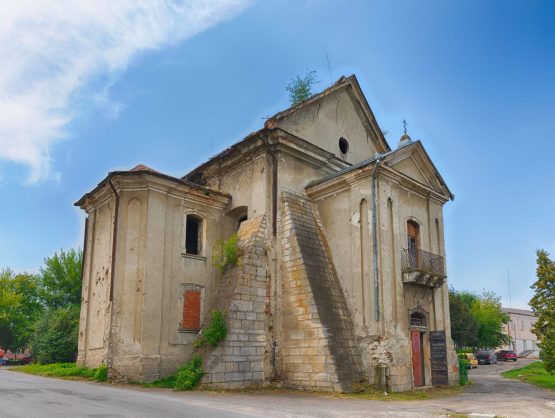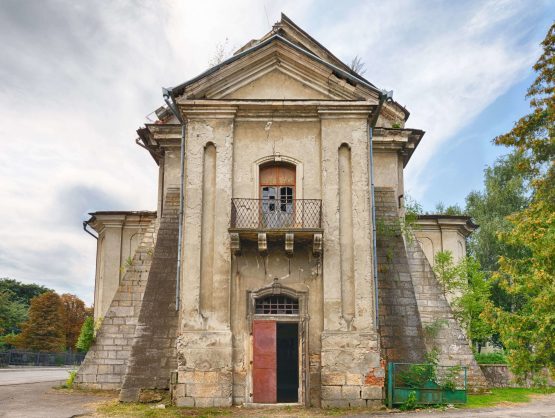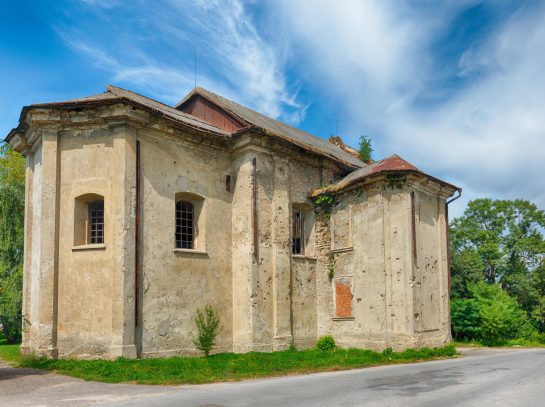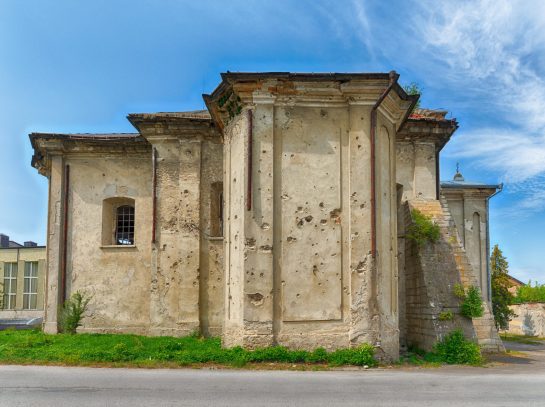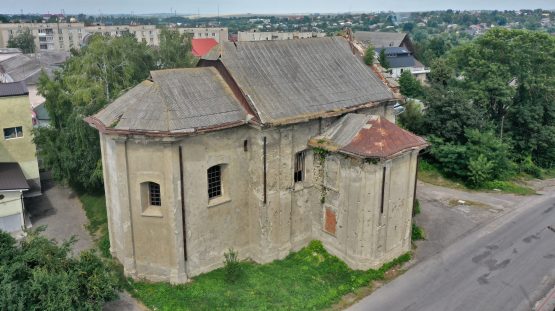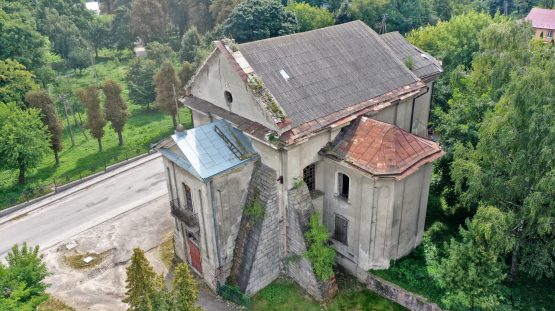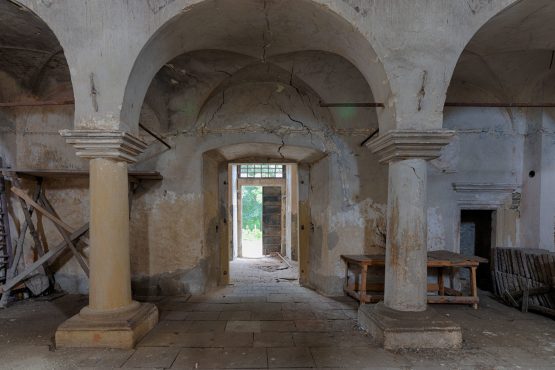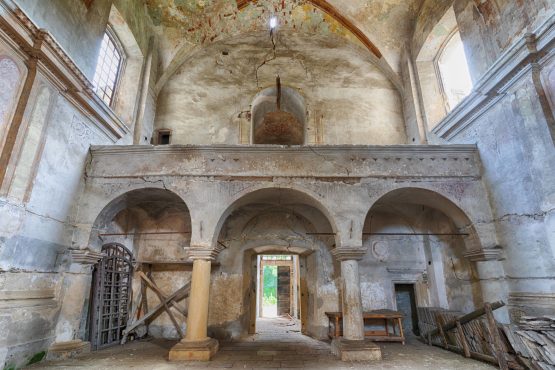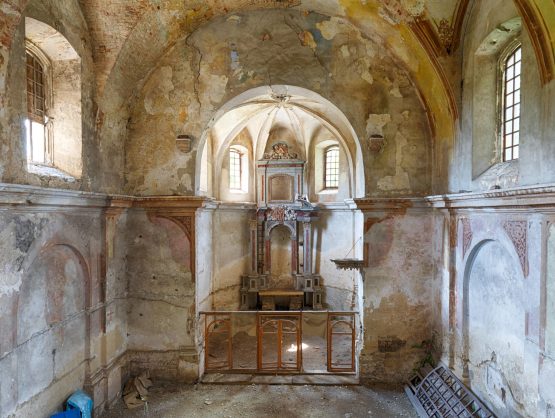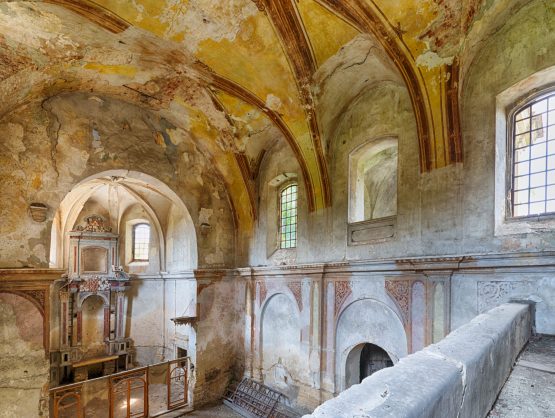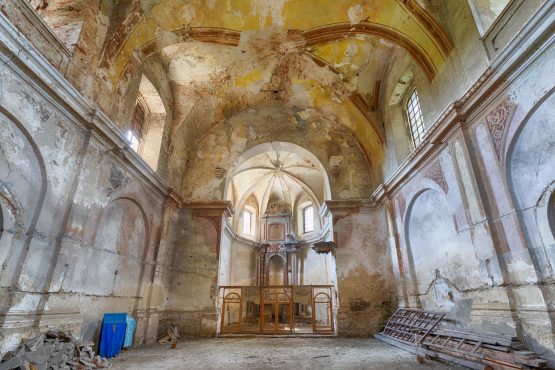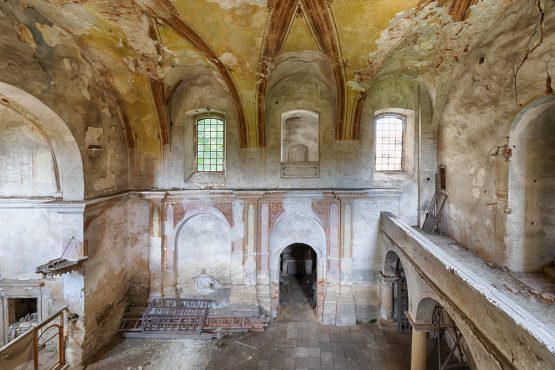The Armenian Church
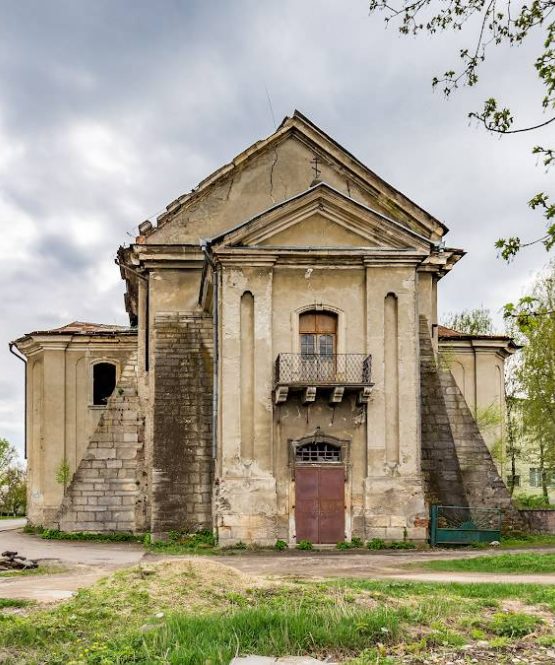
Interesting details
Years of construction
1706
Founder
Unknown
Architect
Unknown
Sculptor
Unknown
Author: Volodymyr Burdenyuk
The first mention of the Armenian Gorodenka in 1670, theatrical father Angelo Peverati. If we take into account that the chapel of the Mother of God of Loretan near the Armenian church is considered to have been built earlier, and the one that preceded it, it is a mention of the first brick stone temple of Horodenka. Many people wonder: why the church, because Armenians have their own Armenian Apostolic Church? Like the Ukrainians, as well as other peoples at different times, most likely for political and economic purposes, the Armenian bishop Mykola Torosovy in 1630 signed a union with Rome. Thus arose the Armenian Catholic Church, which, like the Ukrainian Greek Catholic Church, existed before the Soviet occupation.
The oldest part is the sacristy with rough walls, built around 1706. Instead, the side chapels, choirs and windows were borrowed from the nearby missionary monastery and, most likely, added to the Armenian Catholic church in 1743-1760. At that time, a Roman Catholic church was being built, which was designed by Bernard Meretin, the personal architect of Mykola Pototsky. As you know, Mykola Pototsky was a generous patron of the Armenian Catholic Church in Horodenka, so it is possible that the construction of the side chapels and choirs dates back to 1752, which was included in the list of architectural monuments of the Stanislav region in the 20s of the 20th century. The facade of the church is similar to the facade of the Greek Catholic church, which was also founded by Mykola Pototsky in 1763-1766.
In the church there was an image of the Mother of God of Czestochowa and St. Caetano, famous for his miracles. In 1779 the church was robbed to such an extent that not even the chalice for the celebration of Holy Mass has survived.
On July 16, 1781, Pope Pius VI granted a full indulgence to all those who, on the day of the Assumption of the Blessed Virgin Mary, visit the Loretan Chapel at the Armenian Church and pray for harmony among Christians and for spreading the praise of the Catholic Church.
In 1826, Priest Grzegorz Bogdanowicz was installed as the parish priest of Horodenka. On this occasion, inventory was purchased for the church, which is mistaken for a gift from Mykola Potocki due to its splendor.
The church is 14 fathoms long and 6.5 fathoms wide, has six windows, two chapels of St. Gregory and St. Caetana, each chapel has four windows. The image of the Immaculate Conception of the Virgin Mary is painted on a tree on the main altar. On the right is the image of the Virgin Mary of the Rosary, on the left is the Crucifixion of Christ. The image of St. George is painted on wood, as is St. Cayetano. In the chapel of St. George was the image of the Mother of God of Loreto, which was once in the chapel near the church. The organ was donated to the church by Tadeusz Andżulowski in 1811. The Mother of God once wore silver robes, and St. George wore a silver infula (miter), which in 1806 were given to the imperial treasury. On the right side of the large altar stood a portrait of Nikolai Potocki.
In 1914, the Horodenka parish included villages and towns with a total number of 350 parishioners. Its parish priest was priest Karol Bogdanovich, canon of the metropolitan chapter and dean of Kutiv. The function of guardian of the church was also performed by Prince Andrii Lyubomyrskyi. In addition to the church in Horodenka, the parish also included a chapel in Pidvygomy, built by the owners of this area, Abraham and Gertruda Abrahamovich, as well as chapels in Bazar, Kosov, and Zhezhav. This last chapel was built and consecrated in 1878. The parish also included a small private chapel at the cemetery in Chortkiv, which was built by Anton Kostytskyi in 1888, as well as a chapel in Zadubrovtsi, the founder of which in 1885 was Tomash Petrovych. There was an inscription on the chapel: "For the vicar of the Armenian-Catholic rite at the church in Horodenka." Chapels in Kolinky and Goncharov also belonged to the parish in Horodenka. In Horodenka itself, there was a chapel of the Mother of God of Loretan near the church. Sacraments were celebrated in it even before the construction of the temple. This chapel was built in the first half of the 19th century. was a ruin In 1879, it was restored and covered with shingles. Again, its restoration was undertaken in 1921 thanks to the efforts of priest Karol Bogdanovych. In the 20s of the 20th century, the church began to decline due to a lack of parishioners. Several of the most valuable ophelons from the 18th century, which were the property of the church, were given to the museum in Lviv.
In 1928-1935, priest Adam de Rosko Bogdanovich was the administrator in Horodenka. In 1931, he began the general repair of the church. Walls were erected, gutters were installed, which the church did not have before, lighting was made, fireplaces were installed to heat the church in winter.
The next step was to restore the church inside. The records mention that "the inner part was very damp and the sacristy was neglected, the church inventory was poor." From 1935 the administrator was the priest Valerian Bakovsky, who died during the war on January 6, 1941. After his death, the parish in Horodenka was without a pastor for six months, and the Germans used the church as a warehouse for the property looted from the Jews.
In 1942, the priest became the priest Kazimir Michal Roshko, who reopened the church for the faithful and saved the chapel from destruction by repairing it.
After the war, in June 1945, Casimir left with his parishioners for Poland, and took with him part of the inventory of the church: the image of St. A 17th-century caetana, the image of the Mother of God of Czestochowa, funded by the Lukasevich family, and a wooden bas-relief of the Mother of God of Lorraine. Armenians from Horodenka settled first in Piskovyky, later in Gliwice, where they received from the local authorities the ancient hospital church of the Holy Trinity.
Instead, the parish house of the Armenian Catholics in Horodenka was destroyed at the end of the Second World War. Not far from the church was an old park in which the Polish gymnasium was located. The Russians turned it into a military hospital, which was bombed by the Germans on March 25, 1944. After the destruction of the building, not a trace remained of the gymnasium, and a crack appeared in the wall of the church.

